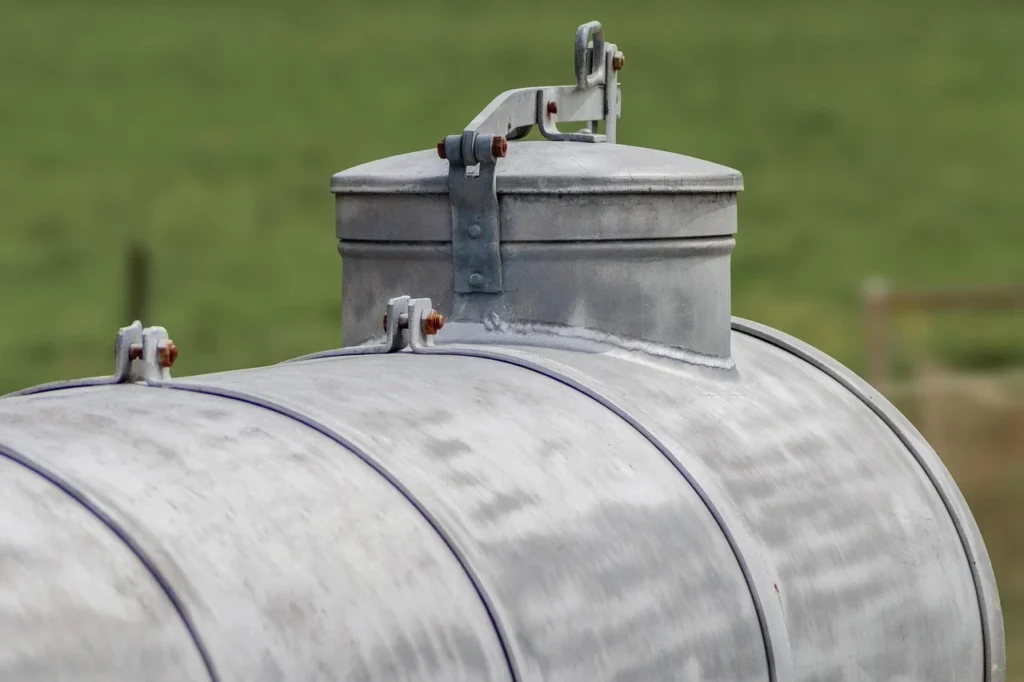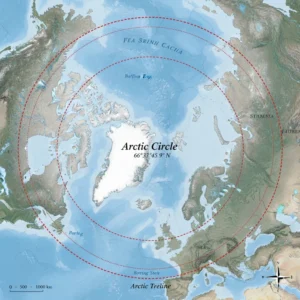Disclaimer: The information provided in this article is for general informational purposes only. While we strive to ensure accuracy, we do not guarantee the reliability or completeness of the content. Always consult with a professional or expert before making decisions related to water storage solutions to ensure they meet your specific needs and local regulations.
Water is a lifeline in the scorching desert climate of the UAE. With summer temperatures often soaring beyond 45°C (113°F) and intense year-round exposure to ultraviolet radiation, selecting a reliable and durable water tank is not just a convenience; it’s a necessity. Whether you’re a homeowner, a facility manager, or an industrial planner, choosing the right water storage solution can safeguard your water quality, reduce maintenance costs, and increase system longevity. Many tanks may look similar, but not all are engineered to endure the extreme conditions of the Middle East. It’s crucial to understand how materials respond to heat, UV, and dust exposure, especially when water safety and hygiene are at stake.
From domestic rooftop tanks to large-scale industrial reservoirs, each use case demands a careful look at materials, design, and certifications. This comprehensive guide explores the top-performing water tank materials in the UAE, namely Fiberglass (FRP), GRP, PVC, and Aluminum, while also helping you identify the right size, features, and safety mechanisms needed to withstand harsh weather and deliver clean, safe water all year round.
✅ Why the UAE’s Climate Demands Specialized Water Tanks
The environment in the United Arab Emirates is known for its unforgiving nature. With annual average highs reaching 45°C, rooftop and outdoor water tanks face significant thermal stress, which can lead to material deformation, cracking, and microbial contamination. In desert cities like Dubai and Abu Dhabi, tanks often absorb direct sunlight throughout the day, with surface temperatures sometimes exceeding 70°C, enough to degrade poor-quality plastics within months. Moreover, the high UV index and persistent dust storms in the region can further compromise the lifespan of materials and contribute to internal algae and bacteria formation, especially in unsealed or poorly ventilated tanks.
These climatic factors also exacerbate the evaporation rate of stored water, making insulation and UV protection essential components of a quality tank. In addition, the water supply in arid regions tends to be chlorinated or desalinated, which may increase the risk of corrosion in metal-based tanks. Therefore, UAE residents and businesses must prioritize tanks made from non-corrosive, UV-stable, and thermally insulated materials that can guarantee structural integrity and water quality for long periods of time, even under the region’s most extreme environmental conditions.
🛠️ Best Water Tank Materials for UAE Weather
🔹 Fiberglass (FRP): Lightweight, Non-Corrosive & Hygienic
Fiberglass-reinforced plastic (FRP) tanks are considered one of the most efficient solutions for water storage in high-temperature regions like the UAE. Constructed by binding interwoven strands of fiberglass with a resin matrix, these tanks offer exceptional resistance to environmental stressors such as UV rays, humidity, and corrosive chemicals. Their non-porous inner surfaces make them highly hygienic, as they discourage the formation of mold, algae, and scale that typically thrive in warm, humid environments. This makes fiberglass tanks particularly suitable for storing potable water safely, without requiring frequent internal cleaning.
Another notable advantage of fiberglass tanks is their thermal insulation capability, which helps maintain the internal temperature of water even in extreme outdoor heat. This not only ensures better water quality but also reduces the rate of evaporation, making them more water-efficient over time. Additionally, fiberglass tanks are lightweight compared to metal and concrete tanks, making transportation and installation easier and less expensive. Many models come with optional anti-bacterial coatings and BPA-free certifications, ensuring that stored water remains uncontaminated and safe for long-term use. With proper care, fiberglass tanks can offer a lifespan of over 20–25 years, even under continuous exposure to desert sun.
🔹 GRP (Glass-Reinforced Plastic): Long-Lasting, Modular & Customizable
GRP water tanks share many of the same benefits as fiberglass tanks, but with the added flexibility of modular construction. Composed of panel-based units that are bolted together on-site, GRP tanks can be customized to fit a wide range of applications, from small rooftop storage units to massive underground reservoirs serving residential communities or industrial plants. These tanks are especially valued in government infrastructure projects and hospitals, where hygienic water storage and long operational life are critical.
In terms of durability, GRP tanks offer exceptional resistance to rust, corrosion, and environmental wear, even in salt-laden coastal areas or dusty interior zones. The tanks are manufactured with UV-resistant gel coatings and can include insulation layers to reduce internal water temperature by several degrees, especially beneficial in open sun installations. Unlike steel or concrete tanks, GRP does not require regular painting or anti-corrosion treatments, saving on long-term maintenance costs. These tanks are also compliant with international water safety standards such as BS EN 13280, ensuring that the water stored inside is suitable for human consumption. With proper installation and inspection, GRP tanks can easily exceed a service life of 30 years or more.
🔹 PVC Tanks: Affordable & Easy to Install
PVC (Polyvinyl Chloride) Water tanks are widely used across the UAE due to their affordability and ease of handling. While they may not offer the same level of durability as fiberglass or GRP tanks, they are still a good choice for temporary installations, rental properties, or low-budget residential needs. PVC tanks are lightweight, non-reactive, and easy to mold into various shapes and sizes. Some modern PVC tanks also come with dual-layer or triple-layer construction, with outer layers that block UV radiation and inner layers that maintain water hygiene.
Despite being a cost-effective option, PVC tanks do have their limitations. Prolonged exposure to extreme sunlight and high temperatures can cause them to degrade, warp, or lose structural integrity. Therefore, they are best suited for shaded or indoor installations or used with protective tank covers. On the upside, these tanks are relatively maintenance-free, and they don’t corrode like metal tanks. They also comply with basic potable water storage guidelines and are safe for domestic usage as long as they’re certified BPA-free. With routine care, a PVC tank can last 8 to 10 years, making it a viable solution for users with moderate storage needs.
🔹 Aluminum Tanks: Lightweight But Not Ideal for UAE Heat
Aluminum tanks are often marketed as corrosion-resistant and recyclable water storage options. While these claims hold some truth, aluminum tanks have several drawbacks when it comes to handling extreme heat, which is common in the UAE. The thermal conductivity of aluminum is very high, meaning that water inside these tanks heats up rapidly under direct sunlight. This not only compromises drinking water quality but also increases the rate of microbial growth unless the tank is shielded or insulated properly.
Furthermore, aluminum lacks the structural versatility of GRP or FRP and may not be suitable for large-scale or irregular installations. While it remains a decent option for cooler, shaded environments or non-potable water applications, aluminum tanks are generally not recommended for long-term storage of drinking water in the Middle Eastern climate. If you’re considering aluminum, it’s essential to use external insulation layers and anti-corrosion coatings, although this adds to both cost and maintenance. On average, aluminum tanks have a service life of 10–12 years, but this can decrease substantially under harsh sun exposure.
💧 Water Hygiene & Safety Considerations
Water hygiene should be a top priority, especially in regions where water is stored for days or weeks before use. Prolonged exposure to high temperatures can encourage the growth of harmful bacteria, algae, and biofilms, posing serious health risks if left unchecked. That’s why it’s critical to select tanks that are certified safe for potable water and include features that help maintain cleanliness over time.
Look for tanks with BPA-free, food-grade inner coatings and anti-bacterial layers. These prevent the leaching of harmful chemicals and reduce the need for frequent disinfection. Smooth inner walls also make manual or robotic cleaning much easier. Additionally, tanks should be equipped with airtight lids and overflow protection to prevent contamination from insects, dust, or debris.
🧼 Maintenance Tip:
Schedule professional tank cleaning every 6 months, especially for rooftop or underground systems. Always inspect inlet/outlet valves for corrosion and replace cracked seals immediately.
📍 Installation Tips for UAE Conditions
Installing a water tank in the UAE requires attention to detail, not just regarding the tank itself but also its foundation, positioning, and accessibility. Ensure that the tank is placed on a level, reinforced concrete slab, especially in the case of heavy GRP models. If the tank is exposed to sunlight, it should be coated or wrapped with UV-blocking insulation. Avoid placing tanks in low-lying or flood-prone areas.
Use float-operated inlet valves to prevent overflow, and ensure the presence of ventilation points with mesh filters to maintain air pressure while keeping contaminants out. For rooftop installations, anchoring is vital to prevent movement during sandstorms or strong wind events.
✅ Final Checklist Before Buying
- Is the tank certified for drinking water?
- Does it include UV protection or insulation?
- Will it resist heat, corrosion, and algae?
- Is the material safe and BPA-free?
- Does the supplier offer warranty and support?
Conclusion
The UAE’s extreme desert environment calls for water storage solutions that are built to last. Investing in the right tank material, be it fiberglass, GRP, or certified PVC, not only preserves your water quality but also reduces long-term maintenance and energy costs. Avoid choosing based on price alone; instead, consider durability, hygiene standards, thermal performance, and ease of maintenance. Your water tank is a core component of your home or business’s infrastructure. Treat it like one, and it will serve you for decades to come.












